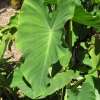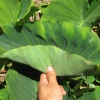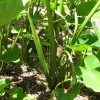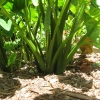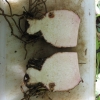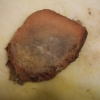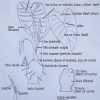Use As Food
Used primarily as a table taro. Taro of Lauloa group were used by the early Hawaiians for medicinal purposes, chiefly in pulmonary disorders. This variety was also used as a balm for the skin to heal scrapes and reduce scarring. They are now popular mainly as table taros and for poi.
Distribution
Widely distributed throughout the islands, almost exclusively in the uplands, but especially common in Kona, Puna, and Kā‘u, Hawai‘i. This variety is probably the most important of the Lauloa for food production due to widely it is grown.
General Characteristics
Tall, erect, stocky, maturing within 9 to 12 months, producing from 3 to 10 ‘ohā; distinguished green Hā (Petiole).
Ha (Petiole)
100 to 140 cm. long, medium green slightly tinged with reddish-purple at top (apex), pinkish-red at the lihi (the stem's edge), a red ring at kōhina (base) with light pink for 3 to 4 cm. above the base.
Lau or Lu'au(Leaf Blade)
45 to 60 cm, long, 30 to 40 cm. wide, 35 to 45 cm, from tip to base of sinus (māwae), narrowly arrow head shaped, slightly concave (curve inward), medium green; margins with a few large undulations; piko small, light purplish; round leaf section (lobes) obtuse with medium.cut to fairly deep lihi māwae (sinus).
'I'o kalo (Corm)
Flesh white with pinkish tinge, especially near apex, and yellowish fibers; skin light to dark pink.
Pua (Flower)
Hā (peduncle) light green; flower cover (spathe) green on lower tubular portion with faint purple areas at kōhina (base) and at constriction (skinny part of flower), the upper portion yellow.
Remarks

